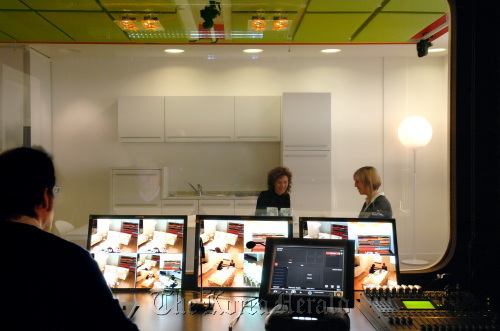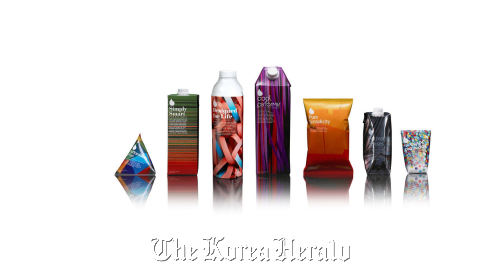Tetra Pak seeks sustainable growth through innovation
By Korea HeraldPublished : Oct. 31, 2011 - 17:06

Swedish company calls Korea a small but fast-growing market for dairy products
PARMA/MODENA, Italy -- Speaking at the World Dairy Summit on Oct. 16 in this Italian city of Parma, Dennis Jonsson, president and CEO of Tetra Pak, pinpointed three key factors that have transformed the global dairy industry over the past 60 years.
He said the world population has almost tripled; consumers have higher expectations about health and well-being; and they have become more environmentally conscious.
“These have created both challenges and opportunities for our industry, requiring collaboration, innovation and a commitment to corporate responsibility,” he told “Summilk” delegates.
During the five-day event of the International Dairy Federation that concluded on Oct. 19, some 1,500 farmers, manufacturers and academics explored how science and technology can contribute to tackling the “challenges and opportunities.”
And the Sweden-based food processing and packaging company shared its experience of innovations for environmentally sustainable and socially responsible dairy production.
New opportunities
According to the IDF, the global dairy market is expected to see a significant growth in the coming years, especially driven by the soaring demands from emerging markets such as China and India.
Global milk production, however, is struggling to meet rapidly growing demands. Along with a supply shortage, milk becomes spoiled easily and cannot be carried for long distance.
Only 7 percent of milk produced globally is traded across borders, with most of the production consumed domestically, the IDF found.
Tetra Pak, however, said its aseptic packaging technology can help countries including Korea not just secure milk stockpiles but also export the leftovers.
The company made “long-life milk” possible when it invented aseptic carton packaging back in 1951 when it was established.
Since then, the invention has become the company’s signature item that maintains the tastes and nutritional value of ingredients, even when stored for months without refrigeration.
PARMA/MODENA, Italy -- Speaking at the World Dairy Summit on Oct. 16 in this Italian city of Parma, Dennis Jonsson, president and CEO of Tetra Pak, pinpointed three key factors that have transformed the global dairy industry over the past 60 years.
He said the world population has almost tripled; consumers have higher expectations about health and well-being; and they have become more environmentally conscious.
“These have created both challenges and opportunities for our industry, requiring collaboration, innovation and a commitment to corporate responsibility,” he told “Summilk” delegates.
During the five-day event of the International Dairy Federation that concluded on Oct. 19, some 1,500 farmers, manufacturers and academics explored how science and technology can contribute to tackling the “challenges and opportunities.”
And the Sweden-based food processing and packaging company shared its experience of innovations for environmentally sustainable and socially responsible dairy production.
New opportunities
According to the IDF, the global dairy market is expected to see a significant growth in the coming years, especially driven by the soaring demands from emerging markets such as China and India.
Global milk production, however, is struggling to meet rapidly growing demands. Along with a supply shortage, milk becomes spoiled easily and cannot be carried for long distance.
Only 7 percent of milk produced globally is traded across borders, with most of the production consumed domestically, the IDF found.
Tetra Pak, however, said its aseptic packaging technology can help countries including Korea not just secure milk stockpiles but also export the leftovers.
The company made “long-life milk” possible when it invented aseptic carton packaging back in 1951 when it was established.
Since then, the invention has become the company’s signature item that maintains the tastes and nutritional value of ingredients, even when stored for months without refrigeration.

Currently, diverse packages both for refrigerated and non-refrigerated liquids are widely used by some 2,600 brands in 170 countries worldwide. And the simple but functional design of Scandinavian touch also appeals to customers.
“Korea is still a small market for dairy products compared to other countries such as Japan. But it is one of the fastest growing markets too as it is expected to benefit from Chinese demands,” said Grace Oh, a spokesperson for Tetra Pak Korea.
Affected by the nation’s long tradition of eating soy foods, Korea is also leading the global trend of soy-based drinks, she added.
Now soy milk products are the most representative Korean item that is exported to abroad being put into Tetra Pak’s aseptic packages.
More recently, the company also started providing the packaging systems to local producers of makgeolli, or Korea’s traditional rice wine, which is recently gaining popularity in Japan.
Make more with less
Tetra Pak invests about 4 percent of its annual turnover into development and engineering, running 11 R&D centers around the world. Last year, the company logged 9.98 billion euros ($13.9 billion) in net sales.
It owns more than 6,500 individual patents and patent applications regarding the packaging and processing of liquid and semi-liquid food.
The new Tetra Pak iLine represents the company’s latest innovation of high-performance aseptic carton packaging lines. And the key point of the total solution is cutting costs.
Compared to existing machines, the iLine helps customers reduce operating costs by anywhere between five and 40 percent, said Roberto Franchitti, director of development and engineering at the company’s Modena plant in Italy.
He explained the cost cuts at each process improve the solution’s environmental performance, with less CO2 emissions and food waste being generated.
In a 2006 U.N. report, 40 percent of CO2 emissions generated in the agricultural industry came from the livestock sector.
As part of the industry’s efforts to tackle environmental issues, Tetra Pak has also continued to cut emissions in the whole process of its production.
Since 2005, it has pledged to reduce 10 percent of CO2 emissions every five years, while maintaining a steady growth rate.
It also uses only wood from responsibly managed forests and aims to increase the renewable content in the package from the current level of about 73 percent to 100 percent.
Another goal is to double the recycling rate of used beverage carbons by 2020 to 40 percent from the current 21 percent, the company said.
By Lee Ji-yoon, Korea Herald correspondent
(jylee@heraldcorp.com)
-
Articles by Korea Herald








![[KH Explains] How should Korea adjust its trade defenses against Chinese EVs?](http://res.heraldm.com/phpwas/restmb_idxmake.php?idx=644&simg=/content/image/2024/04/15/20240415050562_0.jpg&u=20240415144419)











![[Today’s K-pop] Stray Kids to return soon: report](http://res.heraldm.com/phpwas/restmb_idxmake.php?idx=642&simg=/content/image/2024/04/16/20240416050713_0.jpg&u=)